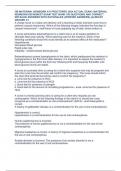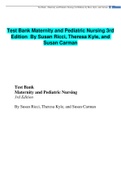Samenvatting
Extensive summary Perception (PSB3E-CP07)
- Instelling
- Rijksuniversiteit Groningen (RuG)
Alle lectures (behalve de guest lecture) zijn uitgebreid samengevat. (Bijna) alle punten zijn uitgebreid uitgelegd met behulp van wat er door de professors verteld is (en soms aangevuld met een wikipedia/internet definitie). De meest relevante figuren uit de slides zijn toegevoegd en uitgelegd.
[Meer zien]













